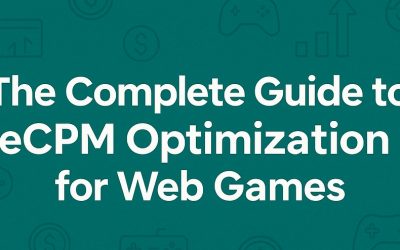Publishers in the Ad Monetization Ecosystem
Publishers are the gatekeepers of digital real estate, providing platforms where ads are displayed to end users. Understanding the role of publishers within this ecosystem is essential for anyone involved in ad monetization, whether you’re an advertiser, a content creator, or a tech intermediary.
This blog post will explore the vital role of publishers, the types of ad inventory they manage, and the unique challenges they face in the ever-evolving ad ecosystem. Here is our table of content
[ez-toc]
Contents
Understanding the Role of Publishers
Publishers are entities that own digital platforms—such as websites, apps, or online services—where advertisements are displayed. They are responsible for managing the content and the ad space on their platforms. In the ad ecosystem, publishers act as the bridge between advertisers, who want to promote their products or services, and end-users, who consume the content and, by extension, the ads.
Publishers’ Key Objectives
Continuing Publishers in the Ad Monetization Ecosystem, key objectives
- Monetization
Monetization is the primary objective of publishers. They aim to maximize revenue from their digital real estate by selling ad space to advertisers. This process involves managing and optimizing ad inventory, negotiating deals with advertisers, and ensuring that the ads displayed are relevant and engaging for their audience. The more effectively a publisher can monetize their platform, the higher their revenue, which is typically measured in metrics like CPM (cost per thousand impressions) or eCPM (effective CPM).
- Audience Engagement
While monetization is crucial, maintaining audience engagement is equally important. Publishers must strike a balance between displaying ads and providing a seamless user experience. If ads are too intrusive, they can drive users away, reducing traffic and, consequently, ad revenue. Therefore, publishers carefully curate the type, frequency, and placement of ads to keep users engaged while still generating income.
- Inventory Management
Effective inventory management is key to maximizing ad revenue. Publishers manage their ad inventory by using tools like Supply-Side Platforms (SSPs) to automate the sale of ad space in real-time auctions. This ensures that their inventory is sold to the highest bidder, optimizing revenue. Additionally, publishers must manage the balance between premium ad spaces, which can be sold directly to advertisers at higher rates, and remnant inventory, which may be sold at lower prices through programmatic advertising.
Types of Ad Inventory
 Continuing Publishers in the Ad Monetization Ecosystem, types of inventory,
Continuing Publishers in the Ad Monetization Ecosystem, types of inventory,
-
Display Ads
Display ads are one of the most common forms of online advertising. These include banner ads, which are typically placed at the top or sides of a webpage. Banner ads come in various formats, including static images, animated GIFs, or interactive media. Their placement on high-traffic areas of a website makes them highly visible, but they need to be designed to avoid being ignored as “banner blindness” can reduce their effectiveness.
-
Video Ads
Video ads are becoming increasingly popular due to their high engagement rates. Publishers manage both in-stream and out-stream video ads. In-stream ads play before, during, or after video content, while out-stream ads are standalone video ads that appear within text-based content. These ads are highly effective in capturing user attention, especially on platforms where video consumption is high, such as mobile apps and social media.
-
Native Ads
Native ads are designed to blend seamlessly into the content of a webpage or app. Unlike traditional display ads, native ads match the look, feel, and function of the media format in which they appear. This makes them less intrusive and more likely to be viewed and engaged with by users. Publishers leverage native ads to provide a more integrated and less disruptive advertising experience, which can lead to higher engagement rates.
-
Rewarded Video Ads
Rewarded video ads are particularly prevalent in gaming apps. These ads offer users a reward, such as in-game currency or additional content, in exchange for watching a video ad. This form of advertising is highly effective because it provides a value exchange—users willingly engage with the ad in return for a reward. Publishers benefit from this model by increasing user engagement and monetization opportunities without negatively impacting the user experience.
-
Interstitial Ads
Interstitial ads are full-screen ads that cover the entire interface of an app or website, typically displayed at natural transition points, such as between game levels or during a pause in content. While their high visibility can make them very effective, they can also be disruptive if not timed or placed correctly. Publishers need to manage the frequency and placement of interstitial ads carefully to avoid frustrating users.
Challenges Faced by Publishers
Continuing Publishers in the Ad Monetization Ecosystem, challenges faced by publisher
-
Ad Blocking
Ad-blocking software poses a significant challenge to publishers. As more users adopt ad blockers, publishers lose potential ad revenue. To combat this, publishers must find ways to make their ads less intrusive or explore alternative monetization strategies. Some publishers are experimenting with ad blocker circumvention techniques, while others are focusing on creating high-quality, engaging content that users are willing to pay for through subscriptions or memberships.
-
Balancing Monetization and User Experience
Striking the right balance between monetization and user experience is an ongoing challenge. Publishers need to generate revenue from ads without driving away their audience. This requires careful consideration of ad formats, placement, and frequency. Too many ads can overwhelm users, leading to higher bounce rates, while too few ads can leave revenue on the table. Publishers must continuously test and optimize their ad strategies to find the right balance.
-
Ad Fraud
Ad fraud is another significant issue that publishers face. This includes practices like click fraud, where automated bots generate fake clicks on ads, leading to inflated metrics and wasted ad spend for advertisers. Publishers need to implement robust fraud detection and prevention measures to protect their revenue and maintain trust with advertisers. This can involve using advanced analytics, partnering with reputable ad networks, and regularly auditing their traffic sources.
-
Data Privacy and Regulation Compliance
In an era of increasing data privacy concerns, publishers must navigate complex regulatory environments, such as the General Data Protection Regulation (GDPR) in Europe. Compliance with these regulations is essential to avoid fines and maintain user trust. Publishers must be transparent about their data practices, obtain user consent for data collection, and ensure that their ad partners are also compliant. This adds an additional layer of complexity to their operations but is crucial for long-term sustainability.
The Evolving Role of Publishers in the Ad Ecosystem
Continuing Publishers in the Ad Monetization Ecosystem, the Evolving Role of Publishers in the Ad Ecosystem
-
Shift to Programmatic Advertising
Programmatic advertising is revolutionizing the way publishers manage their ad inventory. Through automation and real-time bidding, programmatic platforms allow publishers to sell their ad space more efficiently and at scale. This shift has made it easier for publishers to maximize revenue, but it also requires them to stay up-to-date with the latest technologies and market trends. Programmatic advertising offers significant benefits, including increased efficiency and the ability to reach a broader audience, but it also requires publishers to be more agile and data-savvy.
-
The Rise of First-Party Data
As third-party cookies phase out, publishers are increasingly relying on first-party data to drive ad targeting and personalization. First-party data, which is collected directly from users through their interactions with a publisher’s platform, is becoming a valuable asset. By leveraging this data, publishers can offer more personalized ad experiences, leading to higher engagement and better monetization outcomes. Additionally, first-party data is seen as more privacy-friendly, which helps publishers comply with regulations and build trust with their audience.
-
Diversification of Revenue Streams
To reduce reliance on traditional ad revenue, publishers are diversifying their monetization strategies. This includes exploring subscription models, offering premium content, and creating direct-to-consumer products. By diversifying their revenue streams, publishers can create more stable and predictable income sources. This approach also helps them build stronger relationships with their audience by offering value beyond free content. As the ad ecosystem continues to evolve, diversification will be key to long-term success for publishers.
AppLixir Rewarded Video Ad
Publishers play a crucial role in the ad ecosystem, serving as the bridge between advertisers and end-users. They manage various types of ad inventory, from display ads to video ads, and face numerous challenges, including ad blocking, ad fraud, and data privacy concerns. However, by leveraging technology, optimizing ad placements, and adopting a user-first approach, publishers can navigate these challenges and thrive in the digital advertising landscape.
As the ad ecosystem continues to evolve, it’s essential for publishers to stay informed and adaptable. By doing so, they can maximize their revenue, enhance user experience, and maintain their competitive edge in a rapidly changing market. Explore further content on ad monetization to continue optimizing your strategies and staying ahead of industry trends.



